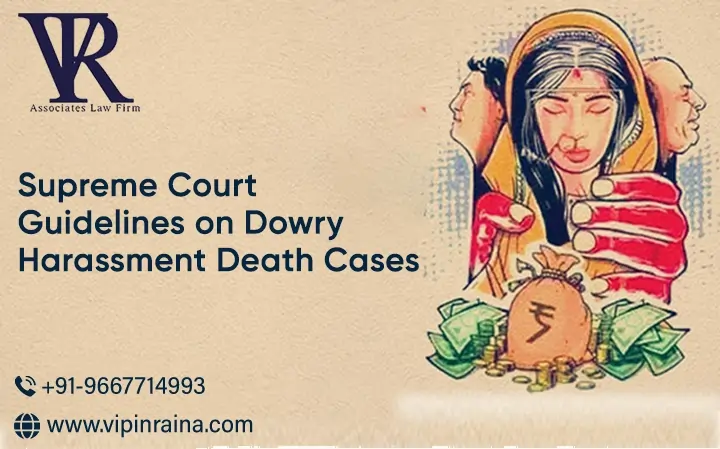Divorce Mistakes That You Can't Afford
18 Dec, 2024
An Analytical Overview of the Satbir Singh Judgment
In a landmark judgment that has set significant precedents for the trial of dowry harassment death cases in India, the Supreme Court of India, on 29th May 2021, delivered a comprehensive verdict in the case of Satbir Singh & Another v. State of Haryana. This case has become a cornerstone for legal practitioners, especially dowry harassment lawyers, in understanding the nuances of legal proceedings in dowry death scenarios. The judgment not only clarifies the interpretation of 'soon before' within Section 304B of the Indian Penal Code (IPC) but also outlines crucial guidelines for the trial courts handling such sensitive cases.
The Case at a Glance
Satbir Singh's case revolves around the tragic death of a woman due to burn injuries within a year of her marriage. The appellants, including the deceased's husband, were accused of harassing her for dowry, leading to her death. Following their conviction by the trial court, upheld by the Punjab and Haryana High Court, the case reached the Supreme Court, raising significant questions on the interpretation of dowry death under Indian law.
Supreme Court's Interpretation and Guidelines
Analyzing Section 304B IPC
The Supreme Court meticulously analyzed the provision for dowry death, emphasizing that the term 'soon before' does not imply 'immediately before' the death. This interpretation allows for a broader timeline to consider evidence of harassment or cruelty related to dowry demands, acknowledging the complexity of these cases.
The Legislative History and Judicial Approach
Understanding the legislative intent behind Section 304B, the Court highlighted the evolution of laws addressing the dowry menace. The judgment referenced past precedents and the legislative framework to underscore the serious nature of dowry deaths and the need for stringent legal scrutiny.
Guidelines for Trial Courts
A significant portion of the judgment is dedicated to guiding trial courts on handling dowry death cases. This includes:
●The importance of establishing a "proximate and live link" between the harassment and the death.
●The role of Section 113B of the Indian Evidence Act in presuming causality, placing the onus on the accused to rebut this presumption.
●The necessity for detailed and careful examination of the accused under Section 313 of the CrPC, ensuring a fair chance for the defense.
Conclusion: A Step Towards Justice
The Supreme Court's judgment in Satbir Singh's case is a testament to the judiciary's commitment to addressing the social evil of dowry deaths with the seriousness it deserves. By clarifying legal provisions and laying down comprehensive guidelines, the judgment arms trial courts with the necessary tools to ensure justice is served.
For individuals facing the complexities of dowry harassment and looking for dowry harassment lawyer, the insights from this judgment are invaluable. Those seeking legal assistance in Gurgaon and surrounding areas are encouraged to reach out to Vipin Raina at V R Associates Law Firm, a dowry harassment lawyer with expertise in navigating the intricate landscape of dowry harassment law, ensuring that justice prevails.
This judgment marks a significant stride towards curbing the menace of dowry deaths in India, reinforcing the legal framework's capability to adapt and respond to the evolving challenges of societal issues.